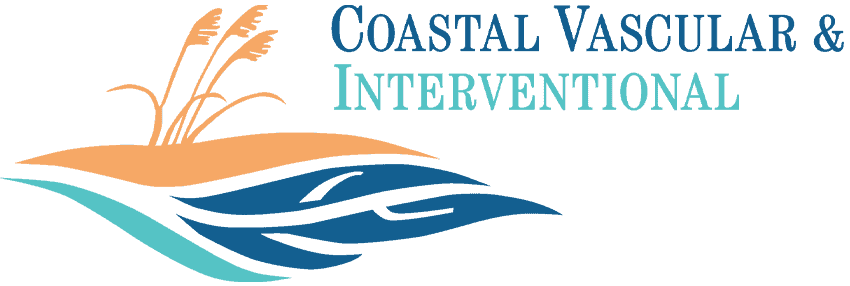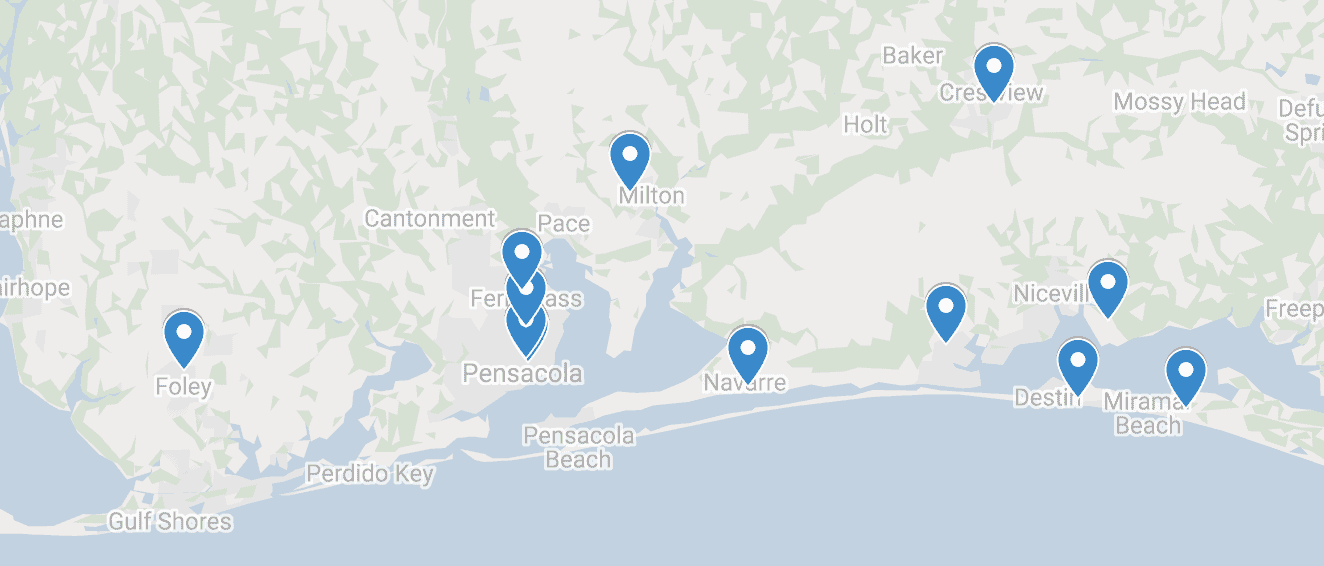What Causes Spider Veins on Legs?
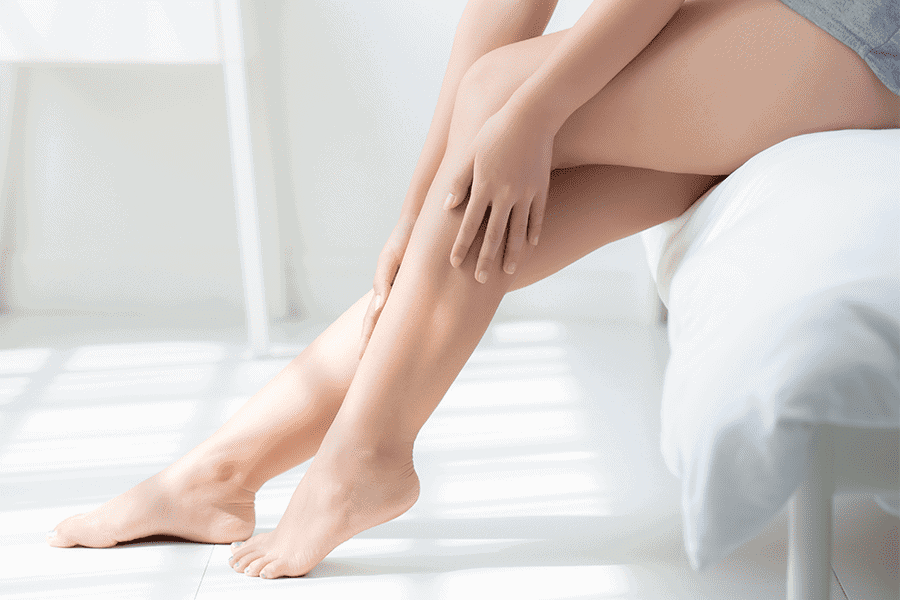
- What is a spider vein?
- What causes spider veins?
- What’s the difference between spider veins and varicose veins?
- How are spider veins treated?
Spider veins may be less noticeable than varicose veins, but if you have them, you probably know it. Spider veins can adorn your legs, your ankles, your face, or elsewhere on the body, spreading out in a clearly visible network of red, purple, and blue lines that can resemble a web. It’s estimated that 30 to 60% of the U.S. adult population have this kind of vein disorder.
Unlike varicose veins, spider veins do not typically cause pain or lead to more serious medical conditions. In fact, spider veins are quite benign—but that doesn’t mean you want to live with them.
What Is a Spider Vein?
Your vascular system, which is also called the circulatory system, consists of two types of blood vessels called arteries and veins that go to and from the heart. The heart serves as a pump, sending blood through the arteries to your extremities and throughout the body.
The body also needs a way to send the blood back to the heart in a circular process of blood and organ oxygenation. That’s the job of veins, an interconnected series of tube-like structures that pushes blood back to the center of the body.
Within each tiny vein is a valve that helps keep blood flowing in the right direction back to the heart for regeneration. When that valve malfunctions, blood pools inside the vein. Over time, this causes the vein to bulge and form a spider vein that’s visible on the skin’s surface. This most frequently occurs on the legs.
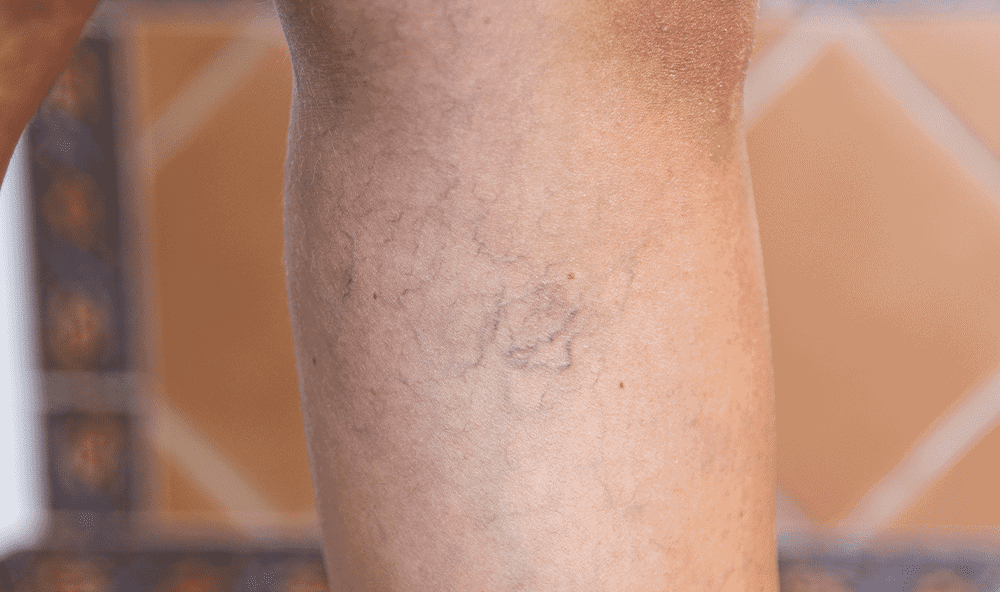
What Causes Spider Veins?
We don’t know the exact cause of the malfunctioning valves that lead to spider veins, but we do know what activities can cause you to be more at risk. Poor circulation or weaknesses in the vein walls could play a factor in developing spider veins. Some diseases such as phlebitis, which is an inflammation of the veins, can also cause the problem.
Spider veins can be genetic. 90 percent of people with spider veins have parents or siblings who also have the vascular disorder. Other factors that contribute to a higher risk include being a woman, as the data shows they develop spider veins more frequently than men, and being older, which is due to weakening of the calf muscles that support the veins in the legs. Other reasons you may develop spider veins include:
- Pregnancy weight gain, which can put more pressure on leg veins
- Hormones or a lack of hormones during menopause
- Standing or sitting for long periods, which causes the veins work harder to pump blood back and forth
- Vein damage from a blood clot
- Sun damage on the face, which can damage the skin and break blood vessels
- Excessive pressure from coughing or sneezing, which can actually cause spider veins on the face
Spider veins are usually considered cosmetic blemishes. They are less worrisome from a medical perspective than another type of vein damage called varicose veins.
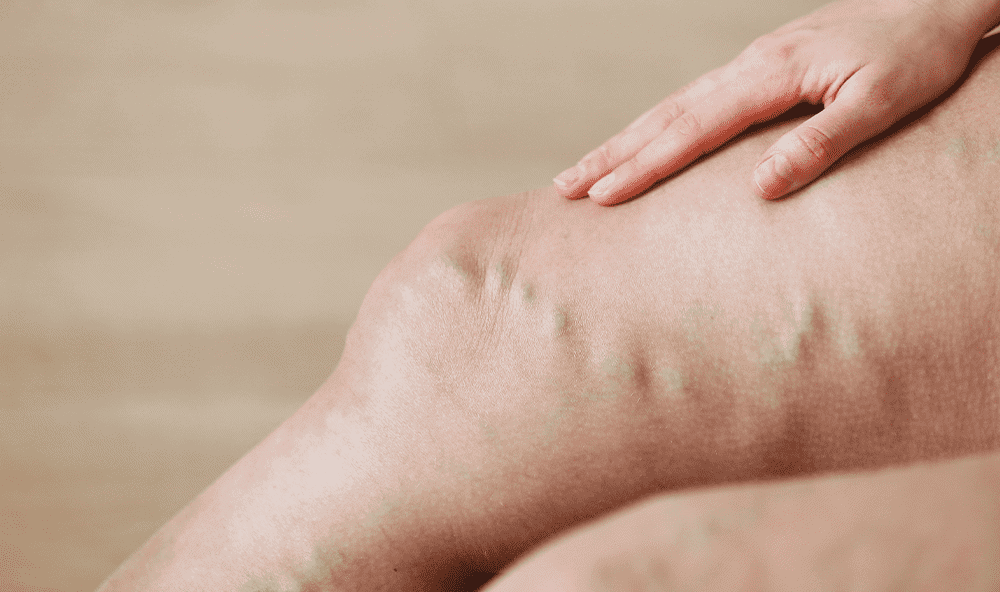
What’s the Difference Between Spider Veins and Varicose Veins?
Spider veins appear as skinny red, blue, or purple lines just under the skin. Varicose veins are even more noticeable, bulging outward above the skin surface like blue or purple cords. Some people have both spider and varicose veins and never seek treatment. Others seek to treat their spider veins for cosmetic reasons, although varicose veins are the ones that are potential indicators of serious health problems and should be a cause for concern.
Both spider and varicose veins stem from similar issues related to malfunctioning valves in the blood vessels. However, while spider veins are not painful, varicose veins can be, causing stinging and throbbing, leg cramps and swelling. Unlike spider veins, varicose veins can cause secondary issues such as increasing the chances of developing a blood clot, which could be serious. Varicose veins can also cause skin ulcers or sores on the legs to occur that are difficult to heal. By contrast, spider veins rarely lead to other health complications.

How Are Spider Veins Treated?
There are several ways to provide self-care for your spider veins by making some lifestyle changes such as:
- Avoiding hot baths
- Avoiding tight clothing
- Elevating your legs
- Exercising and losing weight
- Getting up and walking around every hour if you sit for long periods
- Staying off your feet
You can also wear compression socks. These provide snug support for the calves and can help improve blood flow to slow the progression of spider veins. Talk to your doctor about your options with this type of treatment.
Spider veins can be treated with several minimally invasive procedures performed at the Coastal Vein Institute & Aesthetic Center, including sclerotherapy.
What Is Sclerotherapy?
Sclerotherapy consists of your doctor inserting a small needle into the affected vein and injecting a salt-like chemical called a sclerosant. The sclerosant irritates the vein lining, causing it to swell shut. This diverts blood flow to other healthier veins. Over time, the spider vein fades away. The procedure is most commonly used on larger spider veins that are one to two millimeters in diameter. The doctor typically massages the vein just after the treatment to spread out the sclerosant. You may also wear compression hose for a few weeks as the spider veins fade away.
If you suffer from unsightly spider veins and want them removed, we have the expertise to make that happen. We understand the desire to feel and look your best, and we are ready to help. Don’t hesitate to call our office at 1-850-912-8249 to schedule your consultation.

